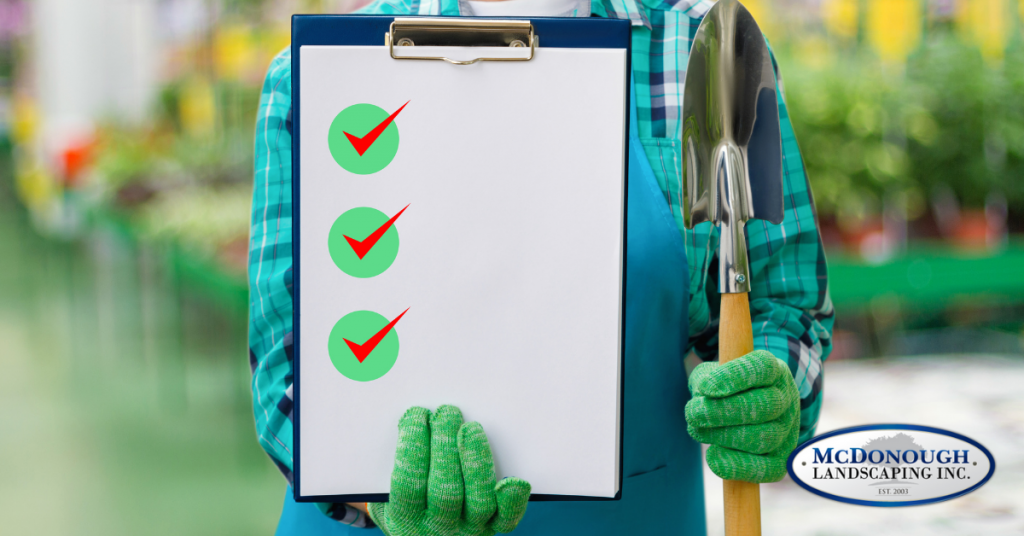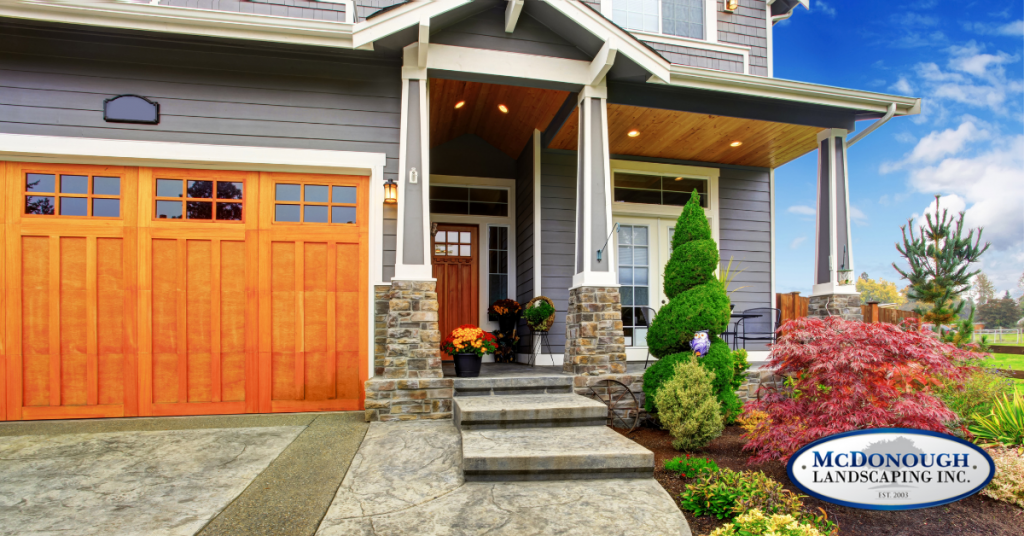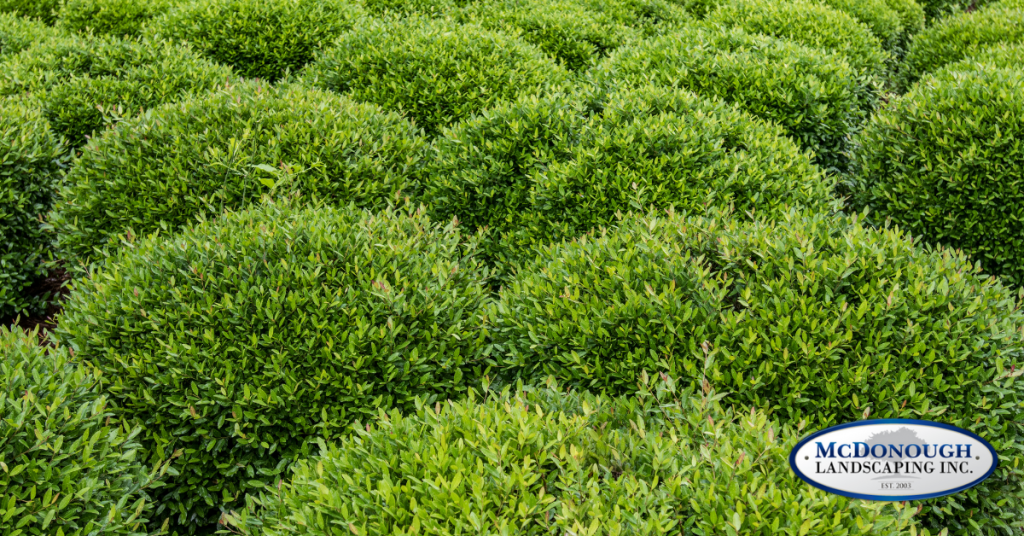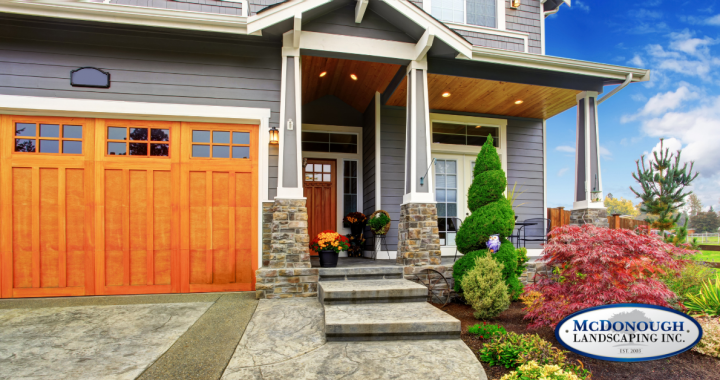It’s that time of year—time to plan out your gardens and work on your home’s landscaping! As you make your plan, watch for these 10 common residential landscaping mistakes. Avoiding them will help ensure your success in creating the beautiful yard and gardens you are dreaming of.
1. Not Planning Your Design

This may be the most common mistake among home gardeners. Never start a landscaping project without a plan. Decide on the overall look you want to create and sketch it out on paper. Figure out where you want to place shrubs, plants, hardscapes, fountains, and other features, taking the shape and style of your home into account as you plan your design. Ideally, your landscaping should flow seamlessly from one element to another.
Make sure your design will look good from all angles, including from your windows. Work to create a design that frames the view from your windows with flowers, trees, and foliage. And don’t forget to consider what your plants will look like when they grow: How quickly or how far will they spread, and how tall will they grow?
2. Not Setting (and Sticking To) a Budget
It’s easy to underestimate how much landscaping can cost. Landscaping can be expensive—as much as 30 percent more expensive than other home improvement projects, in fact! Once you have your design plan sorted out, go through it to price out each element so you have a solid estimate of how much you will need to spend. If you find that your plan will cost more than you planned on spending, you may need to go back and make adjustments or consider completing your plan in stages.
Once you have your budget set, it’s time for the fun part—buying your plants. To help yourself stay within budget, never head to the garden center without a shopping list. Then, stick to that list: get what you came for, and leave.
3. Neglecting Your Home’s Curb Appeal

For many of us, much of the time, energy, and money we spend on landscaping is focused on the backyard, and it can be easy to forget about our home’s curb appeal. When you’re planning out your gardens, don’t forget to make a plan for the front of your home. It doesn’t need to be as extensive as your backyard landscaping, but planting some flowers and greenery out front can make a big difference in your home’s first impression.
4. Prioritizing Form Over Function
Making your yard beautiful is a wonderful thing, but it needs to be functional as well. Think about how you use your yard, not just about how you want it to look. Make a list of the ways you use your yard and what you want to be able to do in your space as you plan out your landscaping.
For instance, if you have young children (or children who visit regularly), a rock garden may not be the best choice, no matter how attractive it may look. Or, if you want room for kids or pets to run around in the yard, you need to leave space for that. Consider all of the ways you want to use your yard throughout the year, then adjust your landscaping plan accordingly.
5. Not Planning For Color

As you are creating your landscaping design, plan out your color palette. Decide which colors you want in your gardens, and which colors will go well together. Too much color can end up being more distracting than beautiful: try to work repetition and harmony into your garden design. Consider also how the flowers you choose will go with the color and style of your home. Pick colors that will enhance your home’s style, not distract from it.
6. Choosing the Wrong Plants
You may love how a plant looks, but that doesn’t mean it will work in your yard. When choosing plants, take into account the light and shade of your yard, as well as the general climate you live in. Each plant has different needs when it comes to temperature, humidity, rain, wind, and sunlight, so be sure to take all of those elements into account.
Your soil makes a big difference in the health and success of your plants as well. For instance, if you have poorly draining soil, plants won’t grow as strong or healthy as they should. Many home and garden centers sell soil test kits that help you determine what nutrients your soil is lacking so you can treat it accordingly with compost or fertilizers.
And don’t forget about the wildlife in your area: will the plants you are choosing be immediately eaten by the deer, or are there plants that will help deter them? Take all of this into consideration when choosing your plants.
7. Trees and Shrubs: Too Close, Too Tall, or Not Enough

If part of your landscaping involves planting trees or shrubs, place them first before adding in the rest of your plants. Trees and shrubs form the foundation of your landscaping design. Plus, they’re not as easily moved as other elements. Choose and place trees or shrubs in a way that creates harmony with the remainder of your landscaping.
And don’t forget how much both trees and shrubs can grow. When you choose plants at the nursery, read the tags and allow for even more growth than they indicate, just to be on the safe side. Trees and shrubs should be planted several (at least four) feet away from your home to keep branches and limbs from damaging your roof or siding and roots from disrupting your foundation.
8. Overcrowding
Nothing ruins the beauty of your landscaping more than overcrowding. An overly cluttered landscape is unattractive and distracting. Plus, plants need space and good air circulation to grow well. As you’re planting, it may initially seem like there is too much empty space, but as your plants grow they will fill in that space.
The same goes for lawn ornamentation. Too many decorative items can make your yard look cluttered, distracting from the beauty of your landscaping. Less is more here: a single statement piece can go a long way.
9. Forgetting About Hardscapes

Don’t make patios, decks, or other hardscapes an afterthought when making a plan for your yard. If you do, you could end up without enough room to do what you want with the space. For instance, when considering a patio, plan for a minimum of 10’x10’ to ensure you’ll have enough room for at least a table and chairs. And if there are other items you want on your patio, you’ll need even more space.
If you are planning to put in a deck, patio, pool, walkway, or other hardscape element, you’ll also want to make sure the plants you’ve chosen work well with that installation. You want to create both an overall look that is pleasing to the eye and a setup that functions the way you need it to.
10. Overlooking Exterior Lighting
Adding exterior lighting not only helps you navigate your yard better at night, it can really make your landscaping pop. The right lighting can make your yard as magical after dark as it is during the day. Plus, lighting increases the time you can spend enjoying all of the hard work you put into your landscaping. Consider what elements you’d like to highlight with lighting, and incorporate that into your design.
Landscaping can be a lot of work, and it can be frustrating when it doesn’t turn out the way you imagined. Taking these common residential landscaping mistakes into account will make a big difference.
If you are in need of further help in planning, executing, and maintaining your landscaping this year, contact the team at McDonough Landscaping. We can help with general landscaping, landscape lighting, patios and walkways, water features, and more. We look forward to helping you make your landscaping dreams a reality!

